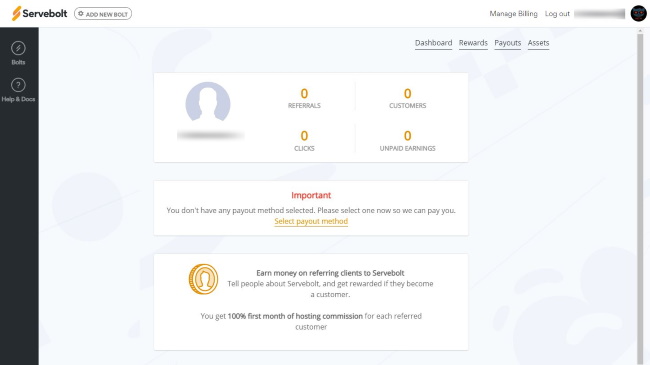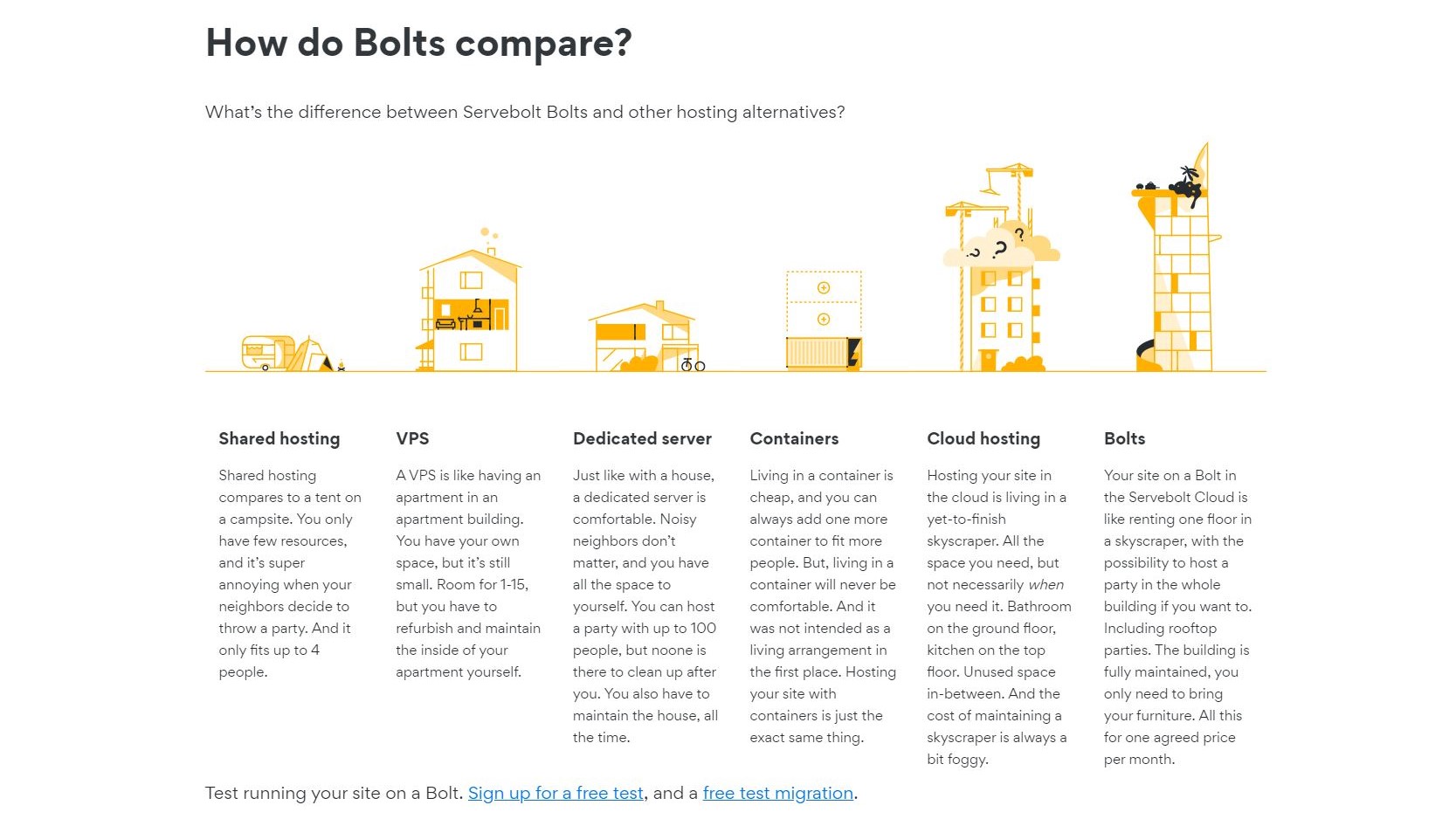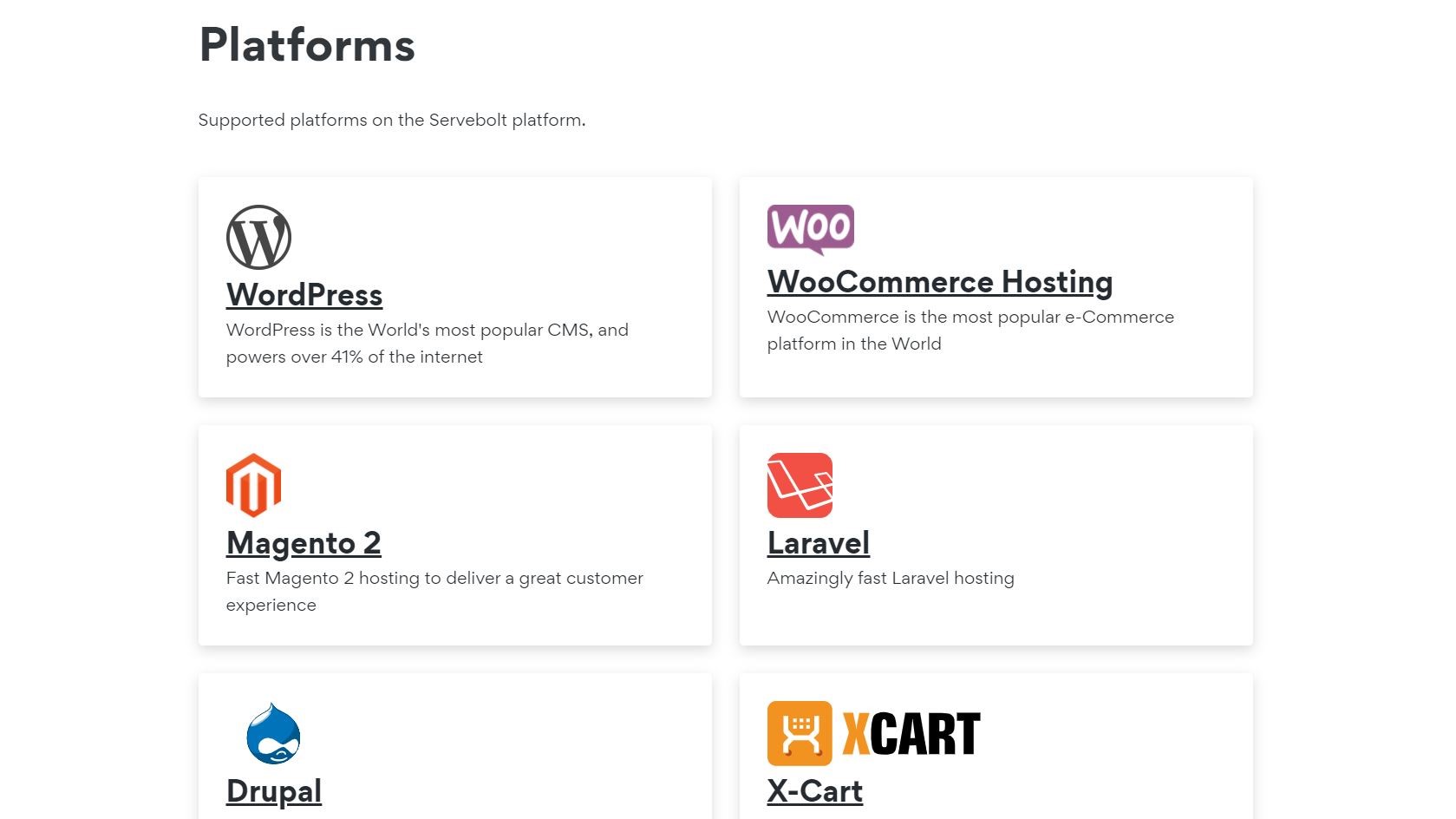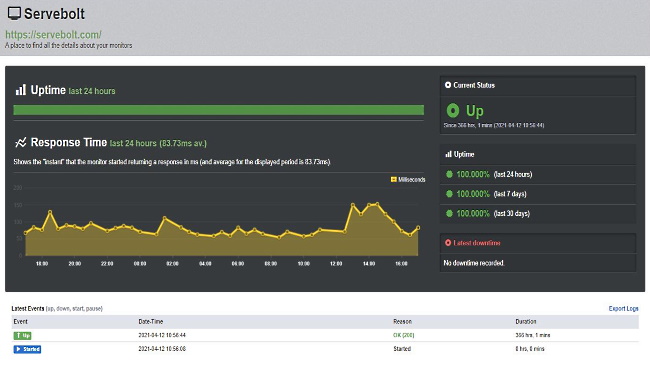Servebolt
Launched in 2014, Servebolt is a relatively recent addition to the WordPress-oriented sector of the web hosting market. The company was founded by Hans Kristian Rosbach and Erlend Eide in Norway and for some time it was known by another name. The name was “Raske Sider” and it can be translated into English as “Fast Pages”.
Whether you prefer the past or the present name of the company is an academic question, but one thing is certain - they have become known for making the problem of performance a thing of the past and their name is synonymous with lightning fast internet speeds.
- Interested in Servebolt? Check out the website here
Servebolt‘s main office is situated in Drammen (Norway) and users can choose between Oslo (Norway) and Amsterdam (the Netherlands) when deciding on a data center location. Although initially aimed at Scandinavia's web hosting market, Servebolt has started to serve international audiences since 2017, and it has been growing in popularity across the whole of Europe.
Servebolt’s main website is simple in design, predominantly white with occasional yellow motifs, and is available in four languages: English, Norwegian, Dutch and Swedish. As of recently, Servebolt’s site features an official blog and a very good one to boot. In addition to the blog, they seem to be fairly active when it comes to social networking (mostly on Facebook and Twitter) while the rest of their social media accounts (YouTube and Instagram in particular) feel kind of obsolete.
- Also check out our roundup of the best managed hosting

Plans and pricing
Since Servebolt is geared towards demanding users that require top-tier speed and pretty much perfect performance (such as media-heavy sites, community sites, third-party resource sites and so on), the pricing of their product is adjusted accordingly. Therefore, if you are unwilling to pay top dollar, this is likely the wrong web hosting provider for you.
Servebolt offers a wide variety of managed WordPress hosting solutions separated into two categories: “High Performance” (which contains six plans) and “Enterprise” (three plans). Apart from the fees, the differences between these plans are for the most part related to storage, files, database and dynamic requests. The one closest to being “pocket-friendly” is labeled as “Pro Plan” and it starts at €99 ($119.71) per month. It provides 4GB of storage, up to three 3 websites, unlimited number of PHP workers, countless domain names and up to one million dynamic requests.
All plans, apart from the customizable enterprise-level one, come with an outstanding 60-day free trial. As a result, there is no money-back guarantee.
Available payment methods include: credit cards, PayPal and direct debit (for Eurozone and Sweden alone).

Ease of use
Servebolt is all about speed, speed and more speed, so it’s no wonder their answers to the “Why us” question are somewhat related to the issue of (you can guess) speed. The same goes for their list of features that highlights their network infrastructure, “cutting-edge” hardware solutions, optimized caching configuration, use of the fastest, and latest PHP and their customized version of Linux amongst other things. With all this, Servebolt is on the way to make all worries about performance, security and scalability of your website an ancient history.
After inspecting all of Servebolt’s hosting plans and opting for an ideal one, you can sign up right away or try out the plan first by starting your free trial. Either way, the process is pretty much the same, except that you won’t be charged with free trial, until you decide to make a purchase or upgrade your Bolt (that’s how they call individual environments you manage from your dashboard) with a live domain to launch your website with Servebolt.

To sign up, you’ll be required to create an account with Servebolt and to do so you’ll need to provide a number of personal information (name, last name, email address and mobile phone number). After this, we passed the verification process via email and our new account was activated in less than a minute. There you’ll be greeted by a welcome message featuring a link to a well-written entry from their knowledgebase, explaining what Bolt actually is and how the stuff works around here.
After going through the reading material, we tried our best to be creative with a password (and the strength was “strong”, the algorithm decided), passed another verification (this time via mobile) and entered Servebolt’s administration dashboard in all its simplicity and glory. From there you can manage your server settings, set your domains, control your databases, individual websites, access SSL settings, and change anything you want about your account.

Besides WordPress (for which Servebolt’s platform is specifically designed), a wide array of additional content management systems (CMS) are supported as well, including WooCommerce, Magento, Prestashop, CraftCMS, Drupal and more.
If you happen to find yourself at a loss at any point, don’t hesitate to get in touch with Servebolt’s support staff, because with them you’ll get all the support you never knew you actually needed.

Speed and experience
Free from false modesty, Servebolt emphasizes how they utilize faster networking (including Infiniband), which should ensure lightning-fast transfer of data between computers in their network and minimal latency to all within it. What is more, they promise that their users are going to experience loading speeds they have never seen before.
Although all of this sounds great in theory, we were obliged to check how it holds in practice with our beloved GTmetrix. After the speed test performed on Servebolt’s main website was completed, no one was surprised with an A (100%) as the final grade. However, the time it took for the website to fully load was 3.8 seconds (the average result is 8.2), which is great, but not the greatest speed we have ever witnessed.
As for uptime, Servebolt offers 99.9% uptime guarantee “SLA always included”, and (interestingly) an opportunity for their prospective users to check for themselves the uptime of their website for the last 30 days (it is 99.99% at this moment). In any case, we monitored the uptime of their website for two weeks straight (via UptimeRobot) and got the results that confirm their words. There was no evidence of downtime at all, showing a spotless uptime of 100%.
Support
If you find yourself in need of a helping hand, the first option likely to catch your eye is live chat, which should be available round-the-clock given that they promise a reply time under five minutes. There you’ll be able to see apparently authentic photos of all available support agents. Apart from this, you can get in touch with them via e-mail or telephone number (international one or the one for Norway), although Servebolt’s site subtly suggests you should check out the chat first.

If you prefer not to lean on others, Servebolt provides a “Help Center'' that serves as a knowledgebase, covering everything about hosting from A to Z. Together with commonly seen categories for different types of problems (account, billing, getting started, platform, security and so forth), this knowledgebase features handbooks, guides, how-tos, news and updates. Most of these how-tos are short in length and straight to the point, but they seem quite helpful.
At the end of the day, if you need help with the setup and migrations, or well-written guides to follow, together with continuous support from their technical teams, Servebolt will get it covered.
The competition
Although HostGator offers several well-structured managed WordPress packages that can give you bang for the buck, they are not exactly aimed at mission-critical websites that require flawless performance without making any compromises. On the other hand, Servebolt has been designed with this mission in mind.
Much like HostGator, DreamHost is another fan-favorite famous for providing a whole array of hosting options, features, add-ons and all for a pocket-friendly price. Servebolt is, however, dedicated to the highest level of managed WordPress hosting and would be an overdose for less demanding users. Likewise, Servebolt’s customer support is on the level with their services, while trying to get help from DreamHost’s staff can easily turn into a nightmare.
Bluehost is another well-versed host from the USA with a lot to offer, especially to those who are looking for a way to fire up a website without dealing a critical hit to their budget. Servebolt is more geared towards those who don’t need to worry about their budget, as well as to the customers from Europe, since both of their data centers are situated within its borders.
Aruba is a fellow European web hosting provider with more than two decades of experience under its belt, famous for its budget-friendly plans and (unfortunately) the lack of in-depth support (particularly in English). At the opposite end, Servebolt is neither cheap, nor is it lacking in terms of customer support. Therefore, deciding on who will fit the bill ultimately depends on what kind of website you had in mind and how much are you willing to pay to turn it into reality.
Final verdict
If you are in search of a rock solid WordPress-oriented host for your business-critical website that is, in addition, focused on speed and performance and superb support to boot, Servebolt is your safest bet. If you don’t already know the answer to the question we asked at the start of this journey, here it is: yes, Servebolt is as fast as they say, and commendably so.
However, even if Servebolt provides great value for money, the amount of hard cash you will pay for their services will be nothing short of steep. If you consider yourself a novice in this field, your needs are somewhat simpler, or you are interested in saving some money along the way, both HostGator and Bluehost offer terrific budget-friendly hosting packages with a full range of attractive features.
- We've also featured the best web hosting
0 comments:
Post a Comment